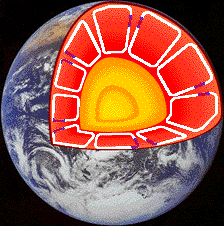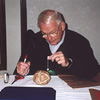This animated image shows heat rising in convection currents from the
outer boundary of the core and cooling at the surface.
Cooling History, part 2
The heat of a body has the power to control activity because energy must be transported from the warmest spots to the coolest spots by whatever means is possible. The process of cooling causes activities on a planet.
Planetary bodies cool by way of:
- 1.) convection of material inside the body, which brings hot material from the deep interior closer to the surface
- 2.) volcanism, which brings hot material to the surface
- 3.) convective motions in the atmosphere and oceans, where air/water is transported from the warm equatorial regions to the cooler poles
- 4.) radiation of infrared energy (heat) directly to space from the
surface.
If a planet is small, it can cool much faster to space than can a body which is larger.
Earth has had a long a complicated cooling history. An understanding
of the Earth's history might begin with the record of geologic time.
You might also be interested in:

The water at the ocean surface is moved primarily by winds. Large scale winds move in specific directions because they are affected by Earth’s spin and the Coriolis Effect. Because Earth spins constantly,
...more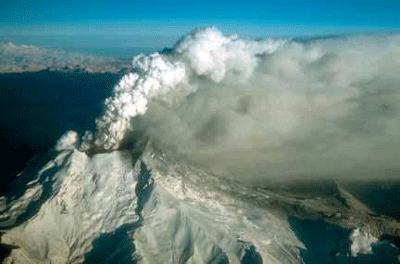
Ash is made of millions of tiny fragments of rock and glass formed during a volcanic eruption. Volcanic ash particles are less than 2 mm in size and can be much smaller. Volcanic ash forms in several ways
...more
Cinder cones are simple volcanoes which have a bowl-shaped crater at the summit and rarely rise more than a thousand feet above their surroundings. They usually are created of eruptions from a single vent,
...more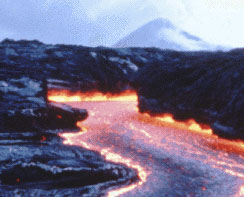
Lava can move in broad flat lava flows, or it can move through constrictive channels or tubes. Lava flows have a large surface area so they tend to cool quickly and flow slowly. The fastest unconstricted
...more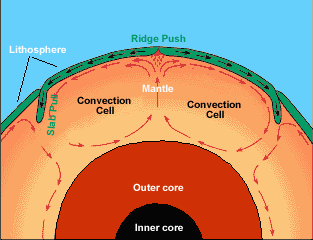
Earth’s center, or core, is very hot, about 9000 degrees F. This heat causes molten rock deep within the mantle layer to move. Warm material rises, cools, and eventually sinks down. As the cool material
...more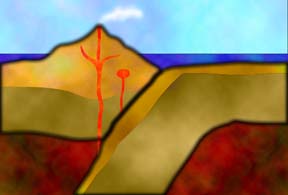
Many kinds of surface features provide evidence of a sliding lithosphere. When two plates move apart, rising material from the mantle pushes the lithosphere aside. Two types of features can form when
...more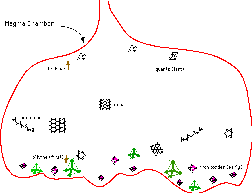
Magma consists of remelted material from Earth's crust and fresh material from the aesthenosphere, relatively near the Earth's surface. When magma is erupted onto the surface in the form of lava, it becomes
...more
